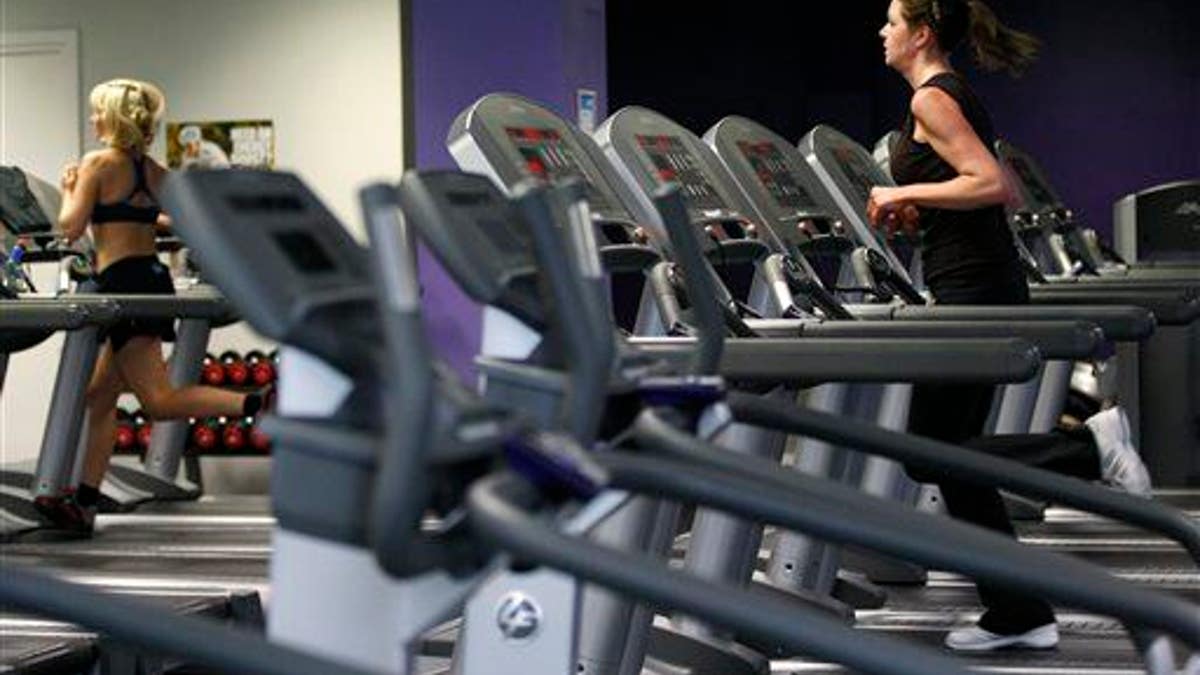
It's harder these days to stay thin, a new study suggests. (AP Photo/Sang Tan, File)
We’ve all heard a trainer or group instructor talk about how the workout we’re doing will keep us burning calories for days after we’re done. Sounds like a weight-loss dream come true. But how legit is this mythical afterburn effect? We talked to the experts to drill down what’s going on inside our bodies and how to get the most out of each and every workout.
What exactly does “afterburn” mean?
The afterburn effect is formally called EPOC, meaning excess post-exercise oxygen consumption, Cris Dobrosielski C.S.C.S., C.P.T., spokesperson for the American Council on Exercise (ACE) and founder of Monumental Results, tells SELF. After working out at a high intensity, your body needs to take in oxygen at a higher rate than it did pre-exercise so it can cool down, repair itself, and return to its resting state.
“This requires the body and metabolism to work at a higher rate, so it continues to burn calories,” Dobrosielski explained. The exact amount will vary for each person, but research from ACE notes that EPOC can increase calorie burn by six to 15 percent.
Related: The 10 Best Stretches For Better Flexibility
What workouts boost afterburn the most?
High-intensity resistance training or high-intensity interval training (HIIT) are the most effective for upping caloric burn post-workout.
“Fundamentally, the most effective moves are multi-joint compound exercises,” Dobrosielski said.
More from SELF: How Much Protein Do You Really Need?
So rather than doing just a bicep curl, do a squat plus a curl, making it a compound exercise. Burpees, squats with a lateral raise, and jump lunges or jump squats are all good examples of dynamic, compound moves. What makes these moves effective is the level of exertion they require (spoiler: a lot). If you’re healthy, work out regularly, and aren’t injured, “a general gauge is you need to be somewhere between level eight and 10 on a perceived exertion scale,” Dobrosielski says. That means reaching that point where you don’t think you can even bang out one more rep you’re so spent.
Related: This Woman’s Pictures Before And After A Panic Attack Show That Mental Illness Can Affect Anyone
Doing high-intensity cardio intervals (like these fat-burning stationary bike workouts) can also produce EPOC similarly to high-intensity resistance training.
“There are a lot of people that have the misconception that HIIT means you have to do burpees and squat jumps and high-impact moves, but there’s a lot of research on the benefits of HIIT with cycling and running or even on the elliptical,” Heather Milton, M.S., exercise physiologist at NYU Langone’s Sports Performance Center, told SELF.
More from SELF: 8 Hip Stretches Your Body Really Needs
She recommends focusing on your heart rate to measure exertion. “If you’re working at 80 percent or more of your maximum heart rate, you know you’re working close to [your limit] and are maximizing the afterburn effect.”
Related: 6 Stretches To Relieve A Tight, Sore Neck
How long does afterburn last?
Your body can continue burning calories at this increased rate anywhere from a few hours to well beyond 24 hours after exercise, depending on the person, Dobrosielski said.
“It can even be 48 hours, which is why we recommend people don’t do these kinds of workouts back to back, and that you take 48 hours between workouts to make sure the body has time to repair,” he added. That doesn’t mean you can’t work out in between HIIT days—active recovery workouts, like jogging and swimming, are ideal. “There are a number of restorative properties to that and it allows a nice cross-section of training.”
Pushing yourself through too many high-intensity workouts without adequate time to repair in between can lead to overtraining and burnout, which can actually decrease your performance. Stick to two or three days a week, with less intense endurance work in between, to keep your metabolism revving full-speed-ahead all week long.




















